Artist Profile
Egon Schiele
Born – 12 June 1890 – Tulln, Austria
Died – 31 October 1918 – Vienna, Austria
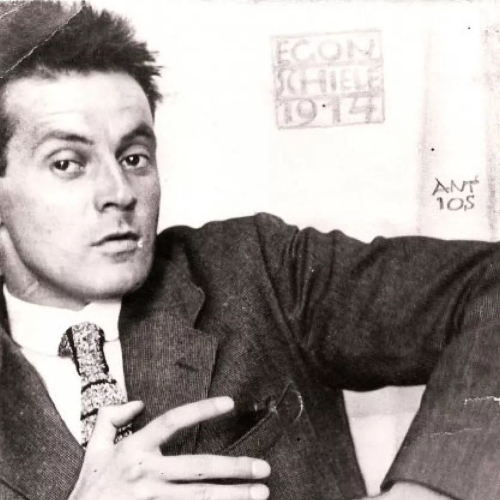
Artist Profile
Egon Schiele
Born – 12 June 1890 – Tulln, Austria
Died – 31 October 1918 – Vienna, Austria
Egon Schiele’s artwork is characterized by distorted forms, expressive lines, and stark emotional intensity, often exploring themes of sexuality, mortality, and psychological tension. His use of bold contouring and minimalistic backgrounds draws focus to the raw, vulnerable human figures, creating a sense of intimacy and unease.
Egon Schiele’s Early Life
Egon Leo Adolf Schiele was born on 12 June 1890 in an apartment in the stationhouse of Tulln, a small-town northwest of Vienna. He was the third of four children born to Adolf Schiele, an upper-level stationmaster for the Austrian State Railways, and Marie Soukup, originally from Krumau in southern Bohemia. The couple had apparently been betrothed since Marie was twelve years old. They were married when she was just seventeen. Egon Schiele’s early years were marked by both great affection and tragedy when his eldest sister, Elvira, died at the age of ten in 1893 of meningitis. The loss deeply affected the family resulting in Schiele developing a particularly close bond with his younger sister, Gertrude (“Gerti”), who later became one of his models.
His formal education began in Tulln but was soon disrupted by his father’s declining health, who suffered from syphilis. In 1901, to prepare Schiele for university he was sent to the grammar school in Krems, about 25 miles from Tulln where he boarded with a very unsympathetic widow. His academic performance was poor, and after a short period he returned home. Despite his low academic achievement Schiele exhibited a prodigious talent for drawing, his passion was drawing trains. In fact, Schiele was so obsessed by trains that he drew them constantly from his room overlooking the station where his father worked. He would often run through the apartment making train noises. On one occasion filled his room with chains of hand drawn train carriages. As a result of this fascination, his parents were convinced he would become a railway engineer like his grandfather.
Egon Schiele’s Early Education
In 1902 Egon Schiele was sent to another grammar school, this time in Klosterneuberg which was closer to Tulln, but again he had to board with strangers and there was still no improvement in his academic work. Later that year Schiele’s father’s syphilis entered its final stages and he was pensioned off from his job for being mentally unstable. Two years later Schiele together with his parents visited Krumau, his mother’s birthplace. Shortly after arriving his father tried to jump from a window into the river Moldau but luckily was stopped.
Death of Schiele’s Father
Adolf Schiele died on New Years Eve 1904, but the family reported his death as occurring on the 1st January 1905 so they could earn an extra year’s pension. Following the death, the family’s financial circumstances declined dramatically and as a result Schiele and Gerti became wards of their uncle, Leopold Czihaczek, a railway official in Vienna. Academically Schiele had fallen behind most of his classmates and subsequently failed the spring term at the Klosterneuburg grammar school. As a result, Schiele’s mother was politely asked to remove him from school. Later that year against strong protests from his uncle, Schiele took the rigorous entrance exam for Vienna’s Academy of Fine Arts and passed.
Schiele attends Art School
So, in the autumn of 1906, at the age of sixteen, Schiele enrolled at the Academy of Fine Arts in Vienna, becoming one of its youngest students. He studied under Christian Griepenkerl, a traditionalist painter known for his historical works. However, Schiele soon grew disillusioned with the academy’s conservative approach, Griepenkerl’s rigid teaching methods and the stifling curriculum so he began to look for inspiration elsewhere.
That inspiration came when a pivotal meeting that happened in 1907 and would prove instrumental in Schiele’s development. He met Gustav Klimt, the leading figure of the Vienna Secession movement. Klimt immediately recognized Schiele’s talent and became his mentor. He introduced him to potential patrons, models, and the works of contemporary artists such as Vincent van Gogh, Edvard Munch, and Jan Toorop. Through Klimt, Schiele also became acquainted with the Wiener Werkstätte, an arts and crafts workshop associated with the Secession. As a result of the association with Klimt a number of Schiele’s earlier works show similarities to Klimt’s. The pose he used for his painting Cardinal and Nun also known as the The Caress, mirrors that of Klimt’s iconic The Kiss.
New Art Group
In 1908, Egon Schiele participated in his first exhibition in Klosterneuburg. The following year, still frustrated with the academy’s rigidity, he and a group of like-minded students, including Oskar Kokoschka and Max Oppenheimer left to form the Neukunstgruppe (“New Art Group”). It advocated a more progressive, expressive approach to painting more in line with the ideas of the Viennese avant-garde art scene. This period marked the foundation of the development of his own distinctive way of drawing and painting.
The New Art Group had their first joint exhibition at the Pisko Gallery in Vienna in December 1909. Not only did this mark the beginning of Schiele’s professional career it was also where he met Arthur Roessler the art critic and art historian. He championed Schiele and became his quasi-business manager and supporter. He was the first to promote and defend Schiele’s work in articles for Arbeiter-Zeitung and helped with portrait commissions through introductions he made to early patrons such as Heinrich Benesch and Oskar Reichel.
In 1910 Egon Schiele moved at Krumau in a bid to escape the artistic rivalries he experienced in Vienna. There he often worked with Erwin Olsen an eccentric stage set painter and began to write poetry. His painting and drawing continued to develop characterized by expressive line, distorted forms, and a focus on the human figure. He was moving away from the decorative elegance of Klimt’s work, to embrace a rawer, more emotionally charged aesthetic. His subjects often included erotic nudes, self-portraits, and allegorical themes, which reflected his own introspective. But his controversial approach was also influenced by the sickness, insanity and death of his father which had had a profound effect on him. It is not surprising therefore, that around this time his work focused on death and decay. As he wrote in 1910, ‘everything is living dead.’
Schiele meets Wally
In 1911, Egon Schiele met Walburga Neuzil, known as Wally, a seventeen-year-old girl who had previously modelled for Gustav Klimt. Wally became Schiele’s muse and companion, appearing in many of his works. Later that year the couple moved to Krumau, Schiele’s mother’s hometown, to seek inspiration and a quieter life. But, their unconventional lifestyle and Schiele’s use of local teenage girls as models led to a community backlash, forcing them to relocate to Neulengbach, a town west of Vienna.
Egon Schiele is Arrested
In 1912, Schiele’s life took a dramatic turn when he was arrested on the 13th of April in Neulengbach on charges of seducing a minor and producing pornographic drawings. This was after locals had complained that he was living with a woman who was not his wife, and that he had invited local children to pose for him. Consequently, police constables searched his studio looking for evidence of immorality and confiscated a number of drawings. Schiele was taken to the local jail, where he was confined for 21 days, but was not told what the charges were, in fact he didn’t find out until his trial. At his trial the police presented 100 of his drawings as evidence. The judge took one of them and flamboyantly burned it in front of Schiele’s before sentencing him to a further 3 days confinement. The more serious charge of abusing children was dropped. Throughout his imprisonment, Wally remained loyal and delivered food and art supplies to him daily. During this time Schiele created a series of poignant works reflecting his confinement, and the experience left a lasting impact on his psyche and his art.
After his release the couple had a few stays in short term accommodation before they returned to Vienna and rented a studio in the Hietzinger Hauptstrasse. He would use this studio for the rest of his life.
Despite the scandal of his imprisonment, Schiele’s career continued to rise. In 1913, he held his first solo exhibition at Galerie Hans Goltz in Munich, followed by a show in Paris in 1914. His work began to attract the attention of a wider audience for its intensity and originality. This helped solidified his reputation within the Expressionist movement, but his financial situation was still precarious. This was partly due to his original supporters, Roessler and Benesch losing interest in supporting him because of his constant requests for money and the fact he, in their opinion, charged too much for his paintings.
Search for a settled Life
In November 1914 his sister Gerti married Anton Peschka and gave birth just a month afterwards. This prompted Schiele to start thinking about marrying which resulted in him starting a strong flirtation with two sisters Edith and Adele Harms who lived across the street from his studio.
In 1915, Schiele’s craving for a more settled, steady life intensified and eventually led to him to make the significant decision to marry Edith Harms which he did on the 17th June of that year. Edith was from a respectable middle-class family which was the lifestyle he hoped to aspire to. However, this choice led to the end of his relationship with Wally. She left him after learning of his engagement having refused his offer of a promise to spend several weeks every summer with her on holiday. His utopian dream of an untroubled existence with both women maybe suggested by several works he created around this time depicting women locked in erotic embraces, was over. Schiele never saw Wally again. She later died two years of Scarlet Fever whilst working as a nurse in Split, in what is now Croatia.
The emotional turmoil of this period is suggested in his painting “Death and the Maiden” of 1915. The two figures in the painting are recognisably Schiele and Wally. You can see in the work a sense of intimacy and remoteness in the gestures and the expression of the finality and hopelessness of a love draining away. The end of the relationship with Wally is perhaps summed up when we look at Schiele’s face with its fixed unseeing gaze from an eye that looks abnormally large. It’s a gaze that knows the inevitability of the trauma and knowledge of what is to come.
Marriage and a Call Up
Just 3 days after his marriage to Edith Harms, Egon Schiele was conscripted into the Austro-Hungarian Army. The 1st World war had already been raging for nearly a year. Although he never saw active service, his first assignment was spent digging trenches and guarding and escorting Russian prisoners, who he started to use as subjects for his drawings. He soon began to identify with the prisoners’ plight and concluded that the war was pointlessly cruel. In 1916 he was transferred to a prisoner of war camp at Muhling which was not in the war zone. Edith was permitted to join him; she lived in a hotel while he bunked with the other conscripts. His commanding officer even gave him a disused storeroom to use as a studio.
Even though he had not fought on the front lines his wartime experiences did influence his work. His palette became more subdued, and he began to focus more on themes of mortality and transience.
For a period after their marriage Edith was Schiele’s only model. But his style was changing becoming more naturalistic, less controversial and more mature, perhaps a reflection of the tenderness and intimacy he shared with Edith. But as time went by Edith’s body was no longer as lean and fragile as it had once been. So, Schiele began asking her sister, Adéle, to model for him. Adéle later claimed that her relationship with Schiele wasn’t as virtuous as it perhaps it should have been.
Schiele’s War Duties Reduced
In January 1917 under the sponsorship of a sympathetic young art dealer, Karl Grünwald, Egon Schiele was transferred to the Military Supply Depot in Vienna. His duties there were relatively light, and his commanding officer, Hans Rosé, gave him plenty of creative leeway. As a result, despite wartime restrictions, Schiele’s career began to take off. In July 1917 a portfolio of his work was published, and he also organised the War Exhibition in which he took part and which eventually toured Holland, Sweden and Denmark.
Following the death of Gustav Klimt in February 1918, Schiele became Austria’s leading artistic light, and later in March at the 49th Exhibition of the Vienna Secession, Schiele had 50 works displayed in the main hall and most sold. He continued to busy himself organizing exhibitions at home and abroad and maintained a full calendar of portrait sittings and modelling appointments, and for the first time in his life he could afford to pay for a range of professional models.
At the end of April 1918, he managed to get himself transferred to the Army Museum in Vienna, where he was given almost free rein to pursue his artistic activities in whatever way he wished. With his increasing financial success, he decided to rent a larger studio on the Wattmanngasse, in Vienna, but he also kept his old studio because he had plans of establishing an art school there.
The Spanish Flu
But the new larger studio proved difficult to heat, and by the autumn the war had created desperate food and fuel shortages in Vienna. The Spanish Flu pandemic, which would eventually kill more than 20 million people, more than were killed in the fighting during the 1st World War, finally reached Vienna. At the beginning of October 1918 Edith, who was six months pregnant, contracted the Spanish Flu and died later that month on the 28th. Schiele who was already ill, died just three days later. In those desperate days between their deaths, Schiele captured the depth of his grief in several poignant sketches he made of his wife.
Egon Schiele was just 28 years old when he died yet his impact on the world of art has been enduring. His exploration of human emotion, sexuality, and mortality, conveyed through a distinctive and expressive style, has influenced generations of artists. Schiele was a visionary who, in his brief life, pushed the boundaries of artistic expression and left an indelible mark on the history of art.
RELATED VIDEOS
Gustav Klimt
Artwork

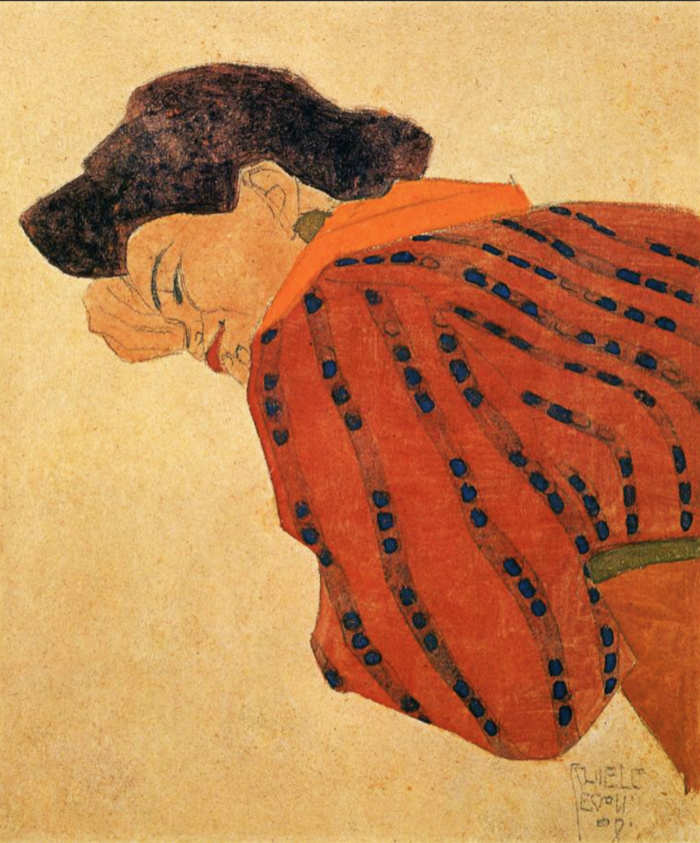
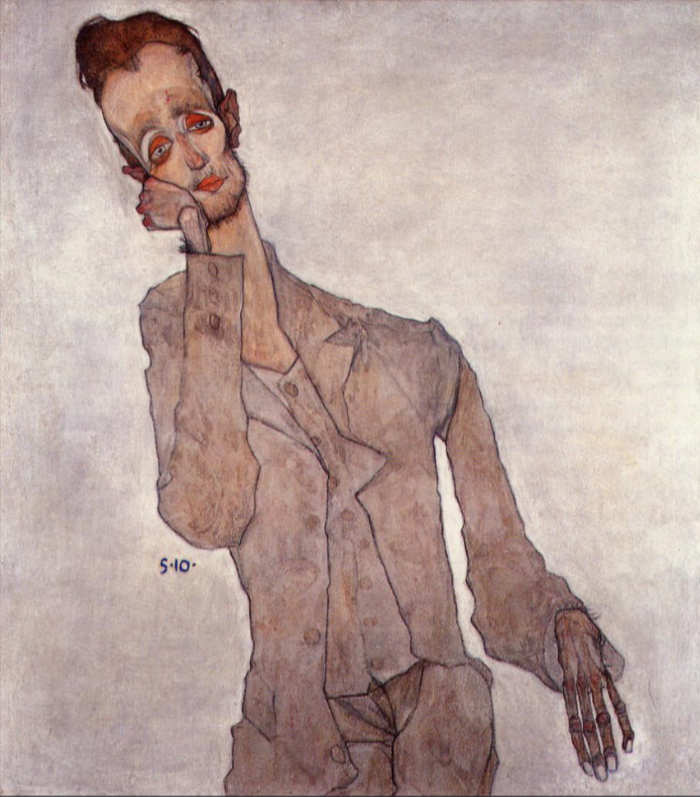
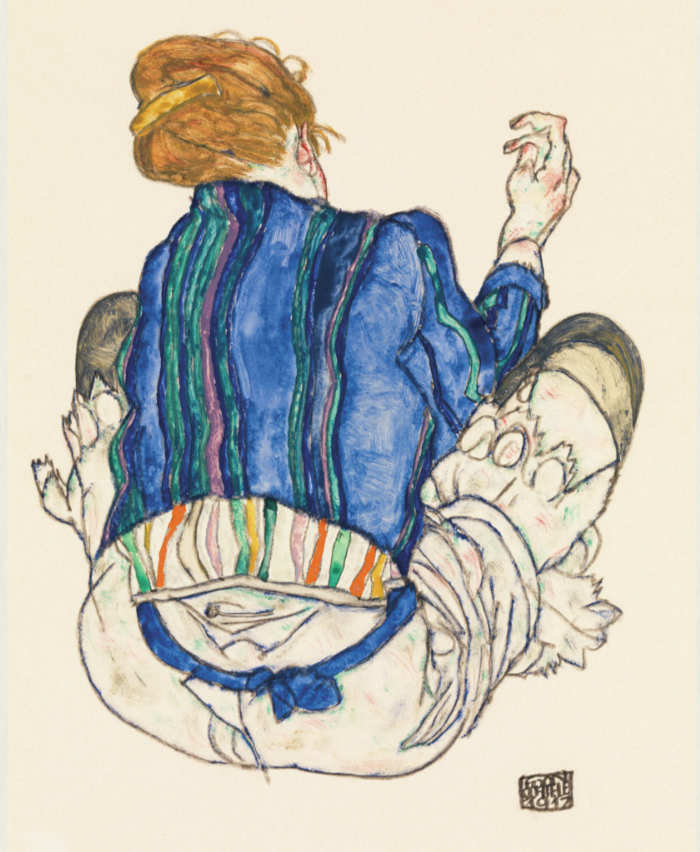
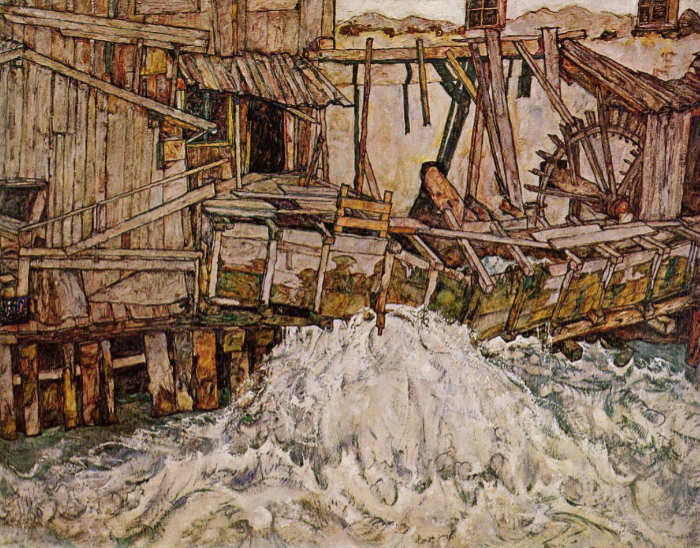

Leave A Comment